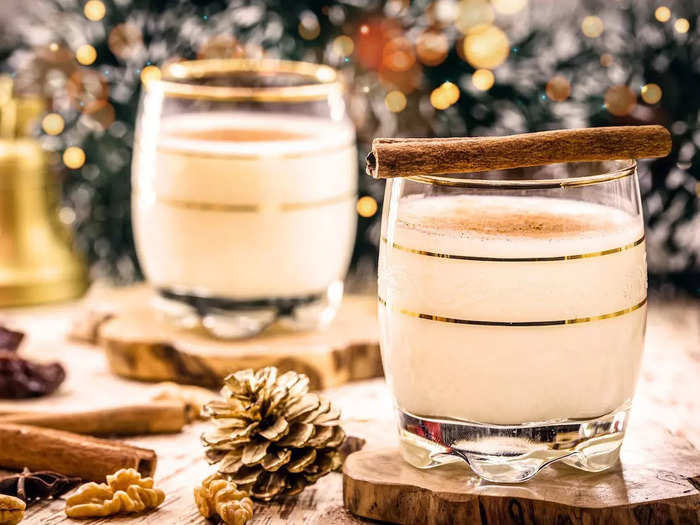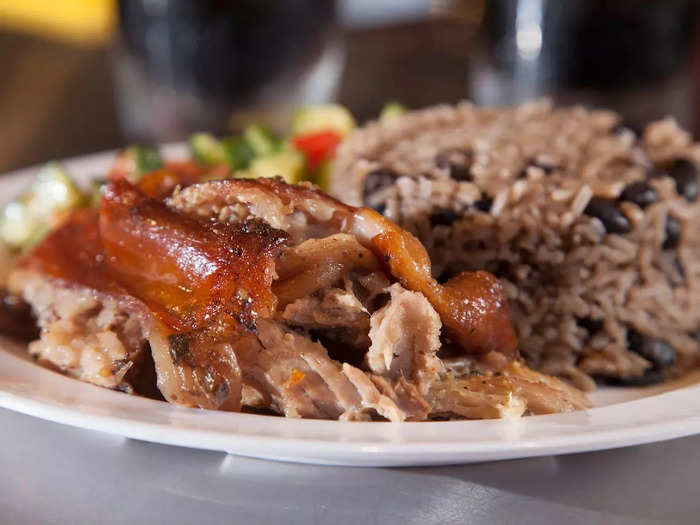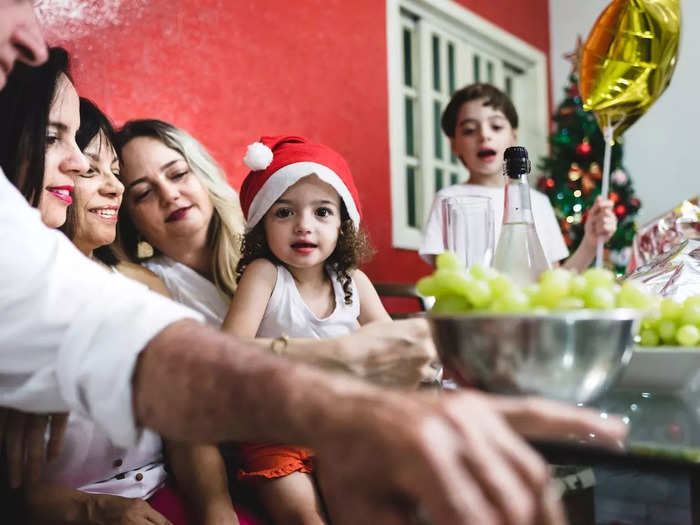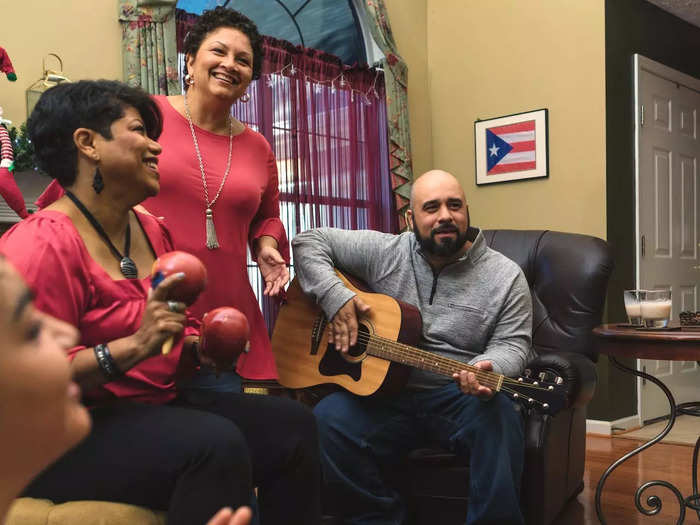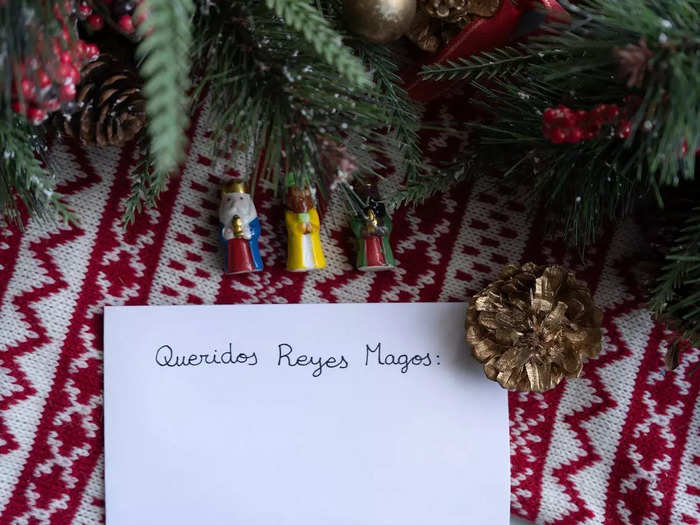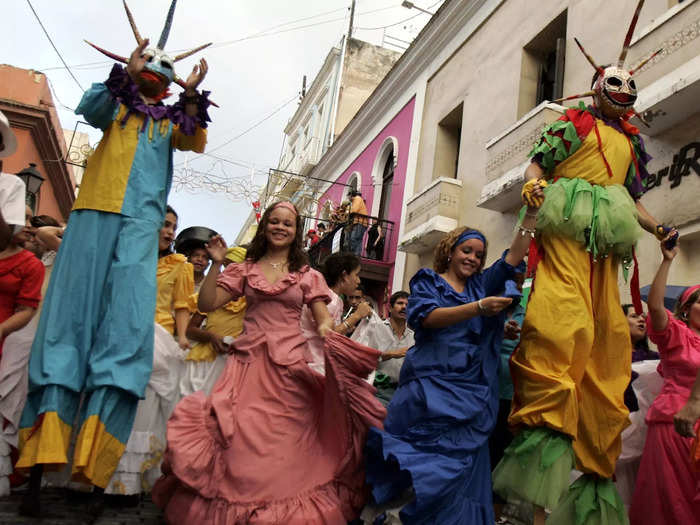Old San Juan, Puerto Rico, during Christmas.Sean Pavone/Getty Images
- The festive season in Puerto Rico is one of the longest in the world, lasting a total of 45 days.
- Puerto Ricans have their own unique ways of celebrating the holidays.
Puerto Ricans may be US citizens, but they have their own history, culture, and customs — especially during the holiday season.
From the food and drink served at Christmas to how long the festive period lasts, Puerto Ricans love to celebrate. As someone who has family on the island and visits each year, I can honestly say that Puerto Rico does the holidays like nowhere else.
To prove it, I've put together a rundown of some of the most popular holiday customs celebrated in Puerto Rico. Take a look.
Coquito is a staple holiday beverage in Puerto Rico.
Coquito looks similar to eggnog but uses different spices and ingredients. RHJ/Getty Images
The holidays in Puerto Rico always call for a cold cup of coquito, a beverage made with ingredients like raw egg, three types of milk, cinnamon and clove, and rum.
Recipes can vary from family to family, but from what I've seen, the drink is served chilled no matter what. At a glance, coquito has the same beige coloring as eggnog, but its texture is much thicker, and its sweetness is derived from sugar and condensed milk.
Puerto Ricans can also enjoy a single batch of coquito for the entire holiday season, as it can be refrigerated for up to eight weeks, according to the Food Network.
Lechon asado, or whole roast pork, is a popular dish during the festive season.
Lechon asado is whole roast pork, and it's served throughout the holiday season. Rafael Bisbal/Getty Images
A typical Puerto Rican Christmas dinner isn't complete without a helping of roast pork, known as lechon asado. When roasted traditionally on a spit, the meat is succulent, flavorful, and has perfectly crisp skin. It's delicious — trust me.
The pork is served with rice, beans, and pasteles, which are another Christmas staple in Puerto Rico.
Some Puerto Ricans bring in the New Year by eating 12 grapes at midnight for good luck.
The grape-eating tradition originated in Spain. Igor Alecsander/Getty Images
Eating 12 grapes in the final seconds of the year is a New Year's Eve tradition some Puerto Ricans follow. The unique custom originates from Spain and is also celebrated in a few other countries in Latin America.
According to Atlas Obscura, there are several theories behind how the custom came to be. One theory is that farmers in Alicante, Spain, were looking for a way to eliminate their surplus in the early 1900s.
But some believe the tradition was actually started decades before in Madrid by people in the middle class who adopted the French New Year's Eve custom of sipping champagne and nibbling on grapes.
Others believe cleaning the house on New Year's Eve or the following day will set them up for success.
Cleaning on New Year's Day is a Puerto Rican tradition. Ekaterina Goncharova/Getty Images
Some Puerto Ricans thoroughly clean their homes either before or the day after New Year's Eve, according to Discover Puerto Rico.
The travel guide suggests Puerto Ricans who take part in the custom do so to start the year on a "positive note" and set the tone for the 12 months to come.
"Parranda" is a Puerto Rican holiday tradition involving turning up to someone's home uninvited to sing to them and play musical instruments.
Parrandas often happen spontaneously. Marilyn Nieves/Getty Images
Parranda is like Christmas caroling in that it occurs during the holidays and involves singing. But the similarities end there.
Unlike caroling, parranda songs aren't associated with religion. They are traditional and festive, but super upbeat and are sung alongside live music from instruments like guitars, tambourines, and maracas.
What makes a parranda so special to me is that it happens spontaneously. A group of people will select a friend or family member's house to visit unannounced at night, wake them up with the live music and songs, and make them join in. From there, the group picks another person's home to visit, continuing the surprises until the early hours of the morning.
Children leave grass or hay under their beds the night before Three Kings Day.
Three Kings Day is another gifting tradition in Puerto Rico. Arianne de San Jose van Hoof/Getty Images
Three Kings Day, which is celebrated on January 6, honors the three wise men who visited Jesus after he was born.
The holiday is a favorite among children in Puerto Rico, who believe the three wise men will visit them when they are asleep the night before. The children leave fresh grass in a box under their beds as food for the camels used by the three wise men and, in return, they receive gifts.
The holidays in Puerto Rico aren't over until the Fiestas de la Calle San Sebastián — in late January.
SanSe takes place in Puerto Rico's capital on January 20. AP Photo/Andres Leighton
Las Fiestas de la Calle San Sebastián, also known as SanSe, is a multi-day festival in Puerto Rico that takes place each year in Old San Juan at the end of January.
It marks the end of the holiday season in Puerto Rico — much longer than festivities in the US, which come to a close after New Year's Eve.
During SanSe, locals, visitors, and Puerto Ricans who live elsewhere and return for the holiday season flock to the colorful, cobblestone-lined streets of Old San Juan wearing traditional attire. They sing, dance, listen to live music, and enjoy a few drinks along the way.

